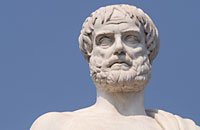60-day returns • free shipping on USA orders $129+


So far in our series, we’ve looked at the three key questions that will help us discern the differences between homeschooling methods, and we’ve talked about how the Charlotte Mason method is different from a traditional curriculum and from unit studies. Today let’s look at how Charlotte Mason differs from the classical approach.
Which Classical Approach?
First, we need to clarify what we mean by “the classical approach.” An education based on classic, language-rich books that hold up high virtues is sometimes called a classical approach. Charlotte Mason would endorse those elements and use the same type of books.
The difference comes in the classical approach that is based on the trivium (the three stages of learners) and that emphasizes memorizing and outlining facts. So in this post we’ll focus on that approach and how it differs from Charlotte Mason.
Feeding the Mind
Probably the biggest difference between these two methods lies in what kind of “food” each approach feeds the child’s mind. The classical approach seems to emphasize facts as food, with a carefully organized standard of which ingredients of information to feed the child at which times. And certain fact-foods are deemed crucial to having a correctly nourished mind.
With the Charlotte Mason method, ideas (rather than facts) are the food for the mind. In a Charlotte Mason-style education, you spread a banquet of nutritious and inviting idea-foods and let the child choose what he will form a relation with—which ideas will “click” with him and provide nourishment for his mind. Each child might take away something different from the feast, but that’s fine because it is all healthful, delicious food.
Remember the motto “Education is the Science of Relations.” Charlotte was not so concerned about what facts a child knew as what relations he had formed—what ideas he felt a kinship with and cared about.
“Our aim in Education is to give a Full Life.––We begin to see what we want. Children make large demands upon us. We owe it to them to initiate an immense number of interests. ‘Thou hast set my feet in a large room,’ should be the glad cry of every intelligent soul. Life should be all living, and not merely a tedious passing of time; not all doing or all feeling or all thinking––the strain would be too great––but, all living; that is to say, we should be in touch wherever we go, whatever we hear, whatever we see, with some manner of vital interest. We cannot give the children these interests; we prefer that they should never say they have learned botany or conchology, geology or astronomy. The question is not,––how much does the youth know? when he has finished his education––but how much does he care? and about how many orders of things does he care? In fact, how large is the room in which he finds his feet set? and, therefore, how full is the life he has before him?” (Vol. 3, pp. 170, 171).
Charlotte believed that only the ideas that had taken up residence in the deep recesses of a child’s mind would influence his life and, thus, truly educate him.
“Though they will plod on obediently over any of the hundreds of dry-as-dust volumes issued by the publishers under the heading of ‘School Books,’ or of ‘Education,’ they keep all such books in the outer court, and allow them no access to their minds” (Vol. 3, p. 228).
“In the end we shall find that only those ideas which have fed his life are taken into the being of the child” (Vol. 2, p. 38).
More Specifics
If you would like more specifics on the difference between the Charlotte Mason method and the classical approach, you’ll find a brief overview on our site, along with links to longer articles that might interest you.

Thank you for these valuable posts!